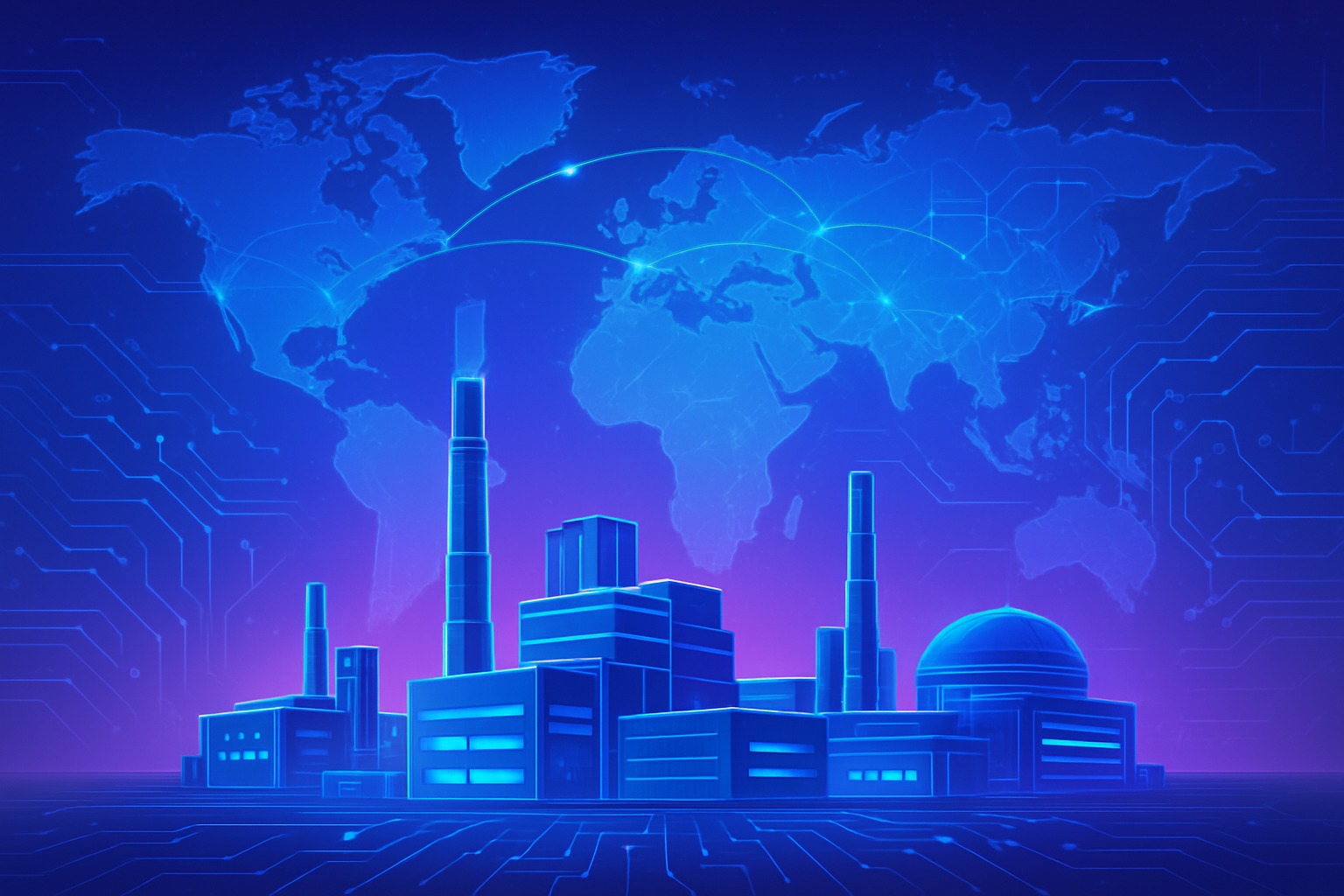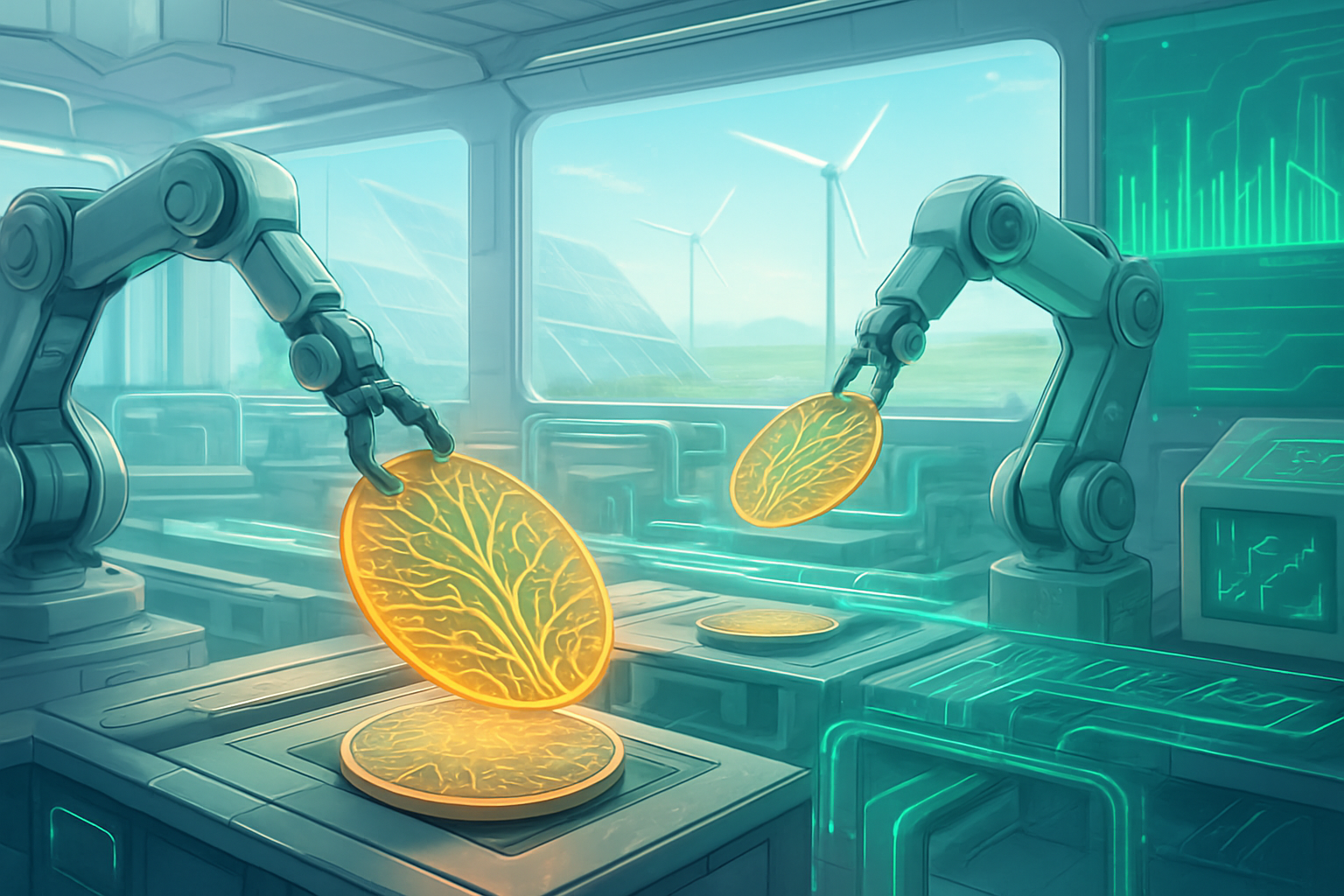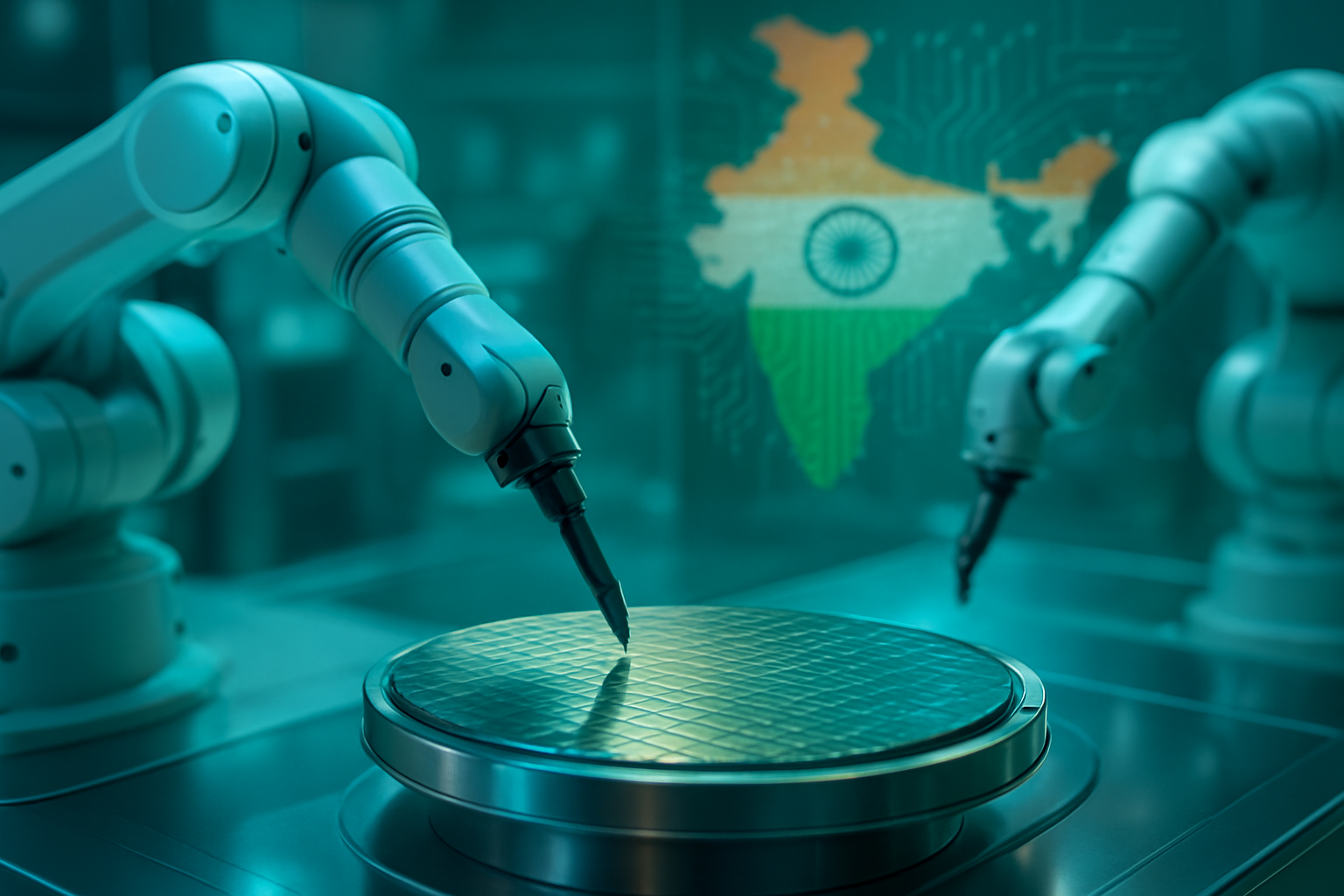The global semiconductor industry is in the midst of an unprecedented building boom, with chipmakers and governments worldwide committing trillions of dollars to construct new fabrication plants (fabs) and expand existing facilities. This massive wave of investment, projected to exceed $1.5 trillion between 2024 and 2030, is not merely about increasing capacity; it represents a fundamental restructuring of the global supply chain, driven by escalating demand for advanced chips in artificial intelligence (AI), 5G, high-performance computing (HPC), and the burgeoning automotive sector. The immediate significance lies in a concerted effort to enhance supply chain resilience, accelerate technological advancement, and secure national economic and technological leadership.
This transformative period, heavily influenced by geopolitical considerations and robust government incentives like the U.S. CHIPS and Science Act, is seeing a strategic rebalancing of manufacturing hubs. While Asia remains dominant, North America and Europe are experiencing a significant resurgence, with major players like Taiwan Semiconductor Manufacturing Company (TSMC) (NYSE: TSM), Intel (NASDAQ: INTC), and Samsung (KRX: 005930) leading the charge in establishing state-of-the-art facilities across multiple continents. The scale and speed of these investments underscore a global recognition of semiconductors as the bedrock of modern economies and future innovation.
The Technical Crucible: Forging the Next Generation of Silicon
The heart of this global expansion lies in the relentless pursuit of advanced process technologies and specialized manufacturing capabilities. Companies are not just building more fabs; they are building highly sophisticated facilities designed to produce the most cutting-edge chips, often pushing the boundaries of physics and engineering. This includes the development of 2nm, 1.8nm, and even future 1.6nm nodes, alongside significant advancements in High-Bandwidth Memory (HBM) and advanced packaging solutions like CoWoS and SoIC, which are crucial for AI accelerators and other high-performance applications.
TSMC, the undisputed leader in contract chip manufacturing, is at the forefront, with plans for 10 new and ongoing fab projects globally by 2025. This includes four 2nm production sites in Taiwan and significant expansion of advanced packaging capacity, expected to double in 2024 and increase by another 30% in 2025. Their $165 billion commitment in the U.S. for three new fabs, two advanced packaging facilities, and an R&D center, and new fabs in Japan and Germany, highlight a multi-pronged approach to global leadership. Intel, aiming to reclaim its process technology crown, is investing over $100 billion over five years in the U.S., with new fabs in Arizona and Ohio targeting 2nm and 1.8nm technologies by 2025-2026. Samsung, not to be outdone, is pouring approximately $309-$310 billion into South Korea over the next five years for advanced R&D and manufacturing, including its fifth plant at Pyeongtaek Campus and a new R&D complex, alongside a $40 billion investment in Central Texas for a new fab.
These new facilities often incorporate extreme ultraviolet (EUV) lithography, a technology critical for manufacturing advanced nodes, representing a significant technical leap from previous approaches. The investment in EUV machines alone runs into hundreds of millions of dollars per unit, showcasing the immense capital intensity of modern chipmaking. The industry is also seeing a surge in specialized technologies, such as silicon-carbide (SiC) and gallium-nitride (GaN) semiconductors for electric vehicles and power electronics, reflecting a diversification beyond general-purpose logic and memory. Initial reactions from the AI research community and industry experts emphasize that these investments are vital for sustaining the exponential growth of AI and other data-intensive applications, providing the foundational hardware necessary for future breakthroughs. The scale and complexity of these projects are unprecedented, requiring massive collaboration between governments, chipmakers, and equipment suppliers.
Shifting Sands: Corporate Strategies and Competitive Implications
The global semiconductor manufacturing expansion is profoundly reshaping the competitive landscape, creating both immense opportunities and significant challenges for AI companies, tech giants, and startups alike. Companies with strong balance sheets and strategic government partnerships are best positioned to capitalize on this boom. TSMC, Intel, and Samsung are clearly the primary beneficiaries, as their aggressive expansion plans are cementing their roles as foundational suppliers of advanced chips.
For AI companies and tech giants like Nvidia (NASDAQ: NVDA), Google (NASDAQ: GOOGL), Microsoft (NASDAQ: MSFT), and Amazon (NASDAQ: AMZN), these investments translate into a more robust and geographically diversified supply of the high-performance chips essential for their AI models and data centers. A more resilient supply chain reduces the risk of future shortages and allows for greater innovation in AI hardware. However, it also means potentially higher costs for advanced nodes as manufacturing shifts to higher-cost regions like the U.S. and Europe. Startups in AI and specialized hardware may face increased competition for fab access, but could also benefit from new foundry services and specialized process technologies becoming available closer to home.
The competitive implications are stark. Intel's ambitious "IDM 2.0" strategy, focusing on both internal product manufacturing and external foundry services, directly challenges TSMC and Samsung's dominance in contract manufacturing. If successful, Intel Foundry Services could disrupt the existing foundry market, offering an alternative for companies seeking to diversify their chip production. Similarly, Samsung's aggressive push into advanced packaging and memory, alongside its foundry business, intensifies the rivalry across multiple segments. The focus on regional self-sufficiency could also lead to fragmentation, with different fabs specializing in certain types of chips or serving specific regional markets, potentially impacting global standardization and economies of scale.
A New Era of Geopolitical Chipmaking
The current wave of semiconductor manufacturing expansion is more than just an industrial phenomenon; it's a geopolitical imperative. This massive investment cycle fits squarely into the broader AI landscape and global trends of technological nationalism and supply chain de-risking. Nations worldwide recognize that control over advanced semiconductor manufacturing is tantamount to national security and economic sovereignty in the 21st century. The U.S. CHIPS Act, along with similar initiatives in Europe and Japan, explicitly aims to reduce reliance on concentrated manufacturing in Asia, particularly Taiwan, which produces the vast majority of advanced logic chips.
The impacts are wide-ranging. Economically, these investments are creating tens of thousands of high-paying jobs in construction, manufacturing, and R&D across various regions, fostering local semiconductor ecosystems. Strategically, they aim to enhance supply chain resilience against disruptions, whether from natural disasters, pandemics, or geopolitical tensions. However, potential concerns include the immense cost of these endeavors, the risk of overcapacity in the long term, and the challenge of securing enough skilled labor to staff these advanced fabs. The environmental impact of building and operating such energy-intensive facilities also remains a significant consideration.
Comparisons to previous AI milestones highlight the foundational nature of this development. While breakthroughs in AI algorithms and software often capture headlines, the ability to physically produce the hardware capable of running these advanced algorithms is equally, if not more, critical. This manufacturing expansion is akin to building the superhighways and power grids necessary for the digital economy, enabling the next generation of AI to scale beyond current limitations. It represents a global race not just for technological leadership, but for industrial capacity itself, reminiscent of historical industrial revolutions.
The Road Ahead: Challenges and Opportunities
Looking ahead, the semiconductor industry is poised for continued rapid evolution, with several key developments on the horizon. Near-term, the focus will remain on bringing the multitude of new fabs online and ramping up production of 2nm and 1.8nm chips. We can expect further advancements in advanced packaging technologies, which are becoming increasingly critical for extracting maximum performance from individual chiplets. The integration of AI directly into the chip design and manufacturing process itself will also accelerate, leading to more efficient and powerful chip architectures.
Potential applications and use cases on the horizon are vast. Beyond current AI accelerators, these advanced chips will power truly ubiquitous AI, enabling more sophisticated autonomous systems, hyper-realistic metaverse experiences, advanced medical diagnostics, and breakthroughs in scientific computing. The automotive sector, in particular, will see a dramatic increase in chip content as vehicles become software-defined and increasingly autonomous. Challenges that need to be addressed include the persistent talent gap in semiconductor engineering and manufacturing, the escalating costs of R&D and equipment, and the complexities of managing a geographically diversified but interconnected supply chain. Geopolitical tensions, particularly concerning access to advanced lithography tools and intellectual property, will also continue to shape investment decisions.
Experts predict that the drive for specialization will intensify, with different regions potentially focusing on specific types of chips – for instance, the U.S. on leading-edge logic, Europe on power semiconductors, and Asia maintaining its dominance in memory and certain logic segments. The "fabless" model, where companies design chips but outsource manufacturing, will continue, but with more options for where to fabricate, potentially leading to more customized supply chain strategies. The coming years will be defined by the industry's ability to balance rapid innovation with sustainable, resilient manufacturing.
Concluding Thoughts: A Foundation for the Future
The global semiconductor manufacturing expansion is arguably one of the most significant industrial undertakings of the 21st century. The sheer scale of investment, the ambitious technological goals, and the profound geopolitical implications underscore its importance. This isn't merely a cyclical upturn; it's a fundamental re-architecture of a critical global industry, driven by the insatiable demand for processing power, especially from the burgeoning field of artificial intelligence.
The key takeaways are clear: a massive global capital expenditure spree is underway, leading to significant regional shifts in manufacturing capacity. This aims to enhance supply chain resilience, fuel technological advancement, and secure national economic leadership. While Asia retains its dominance, North America and Europe are making substantial inroads, creating a more distributed, albeit potentially more complex, global chip ecosystem. The significance of this development in AI history cannot be overstated; it is the physical manifestation of the infrastructure required for the next generation of intelligent machines.
In the coming weeks and months, watch for announcements regarding the operational status of new fabs, further government incentives, and how companies navigate the intricate balance between global collaboration and national self-sufficiency. The long-term impact will be a more robust and diversified semiconductor supply chain, but one that will also be characterized by intense competition and ongoing geopolitical maneuvering. The future of AI, and indeed the entire digital economy, is being forged in these new, advanced fabrication plants around the world.
This content is intended for informational purposes only and represents analysis of current AI developments.
TokenRing AI delivers enterprise-grade solutions for multi-agent AI workflow orchestration, AI-powered development tools, and seamless remote collaboration platforms.
For more information, visit https://www.tokenring.ai/.









